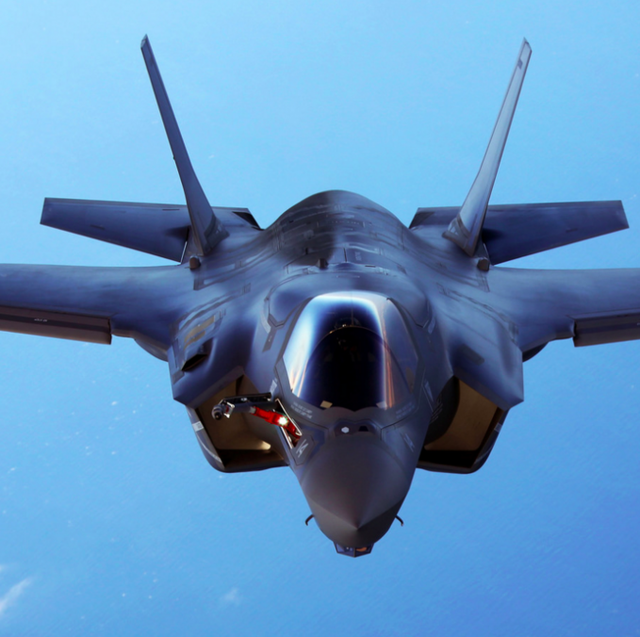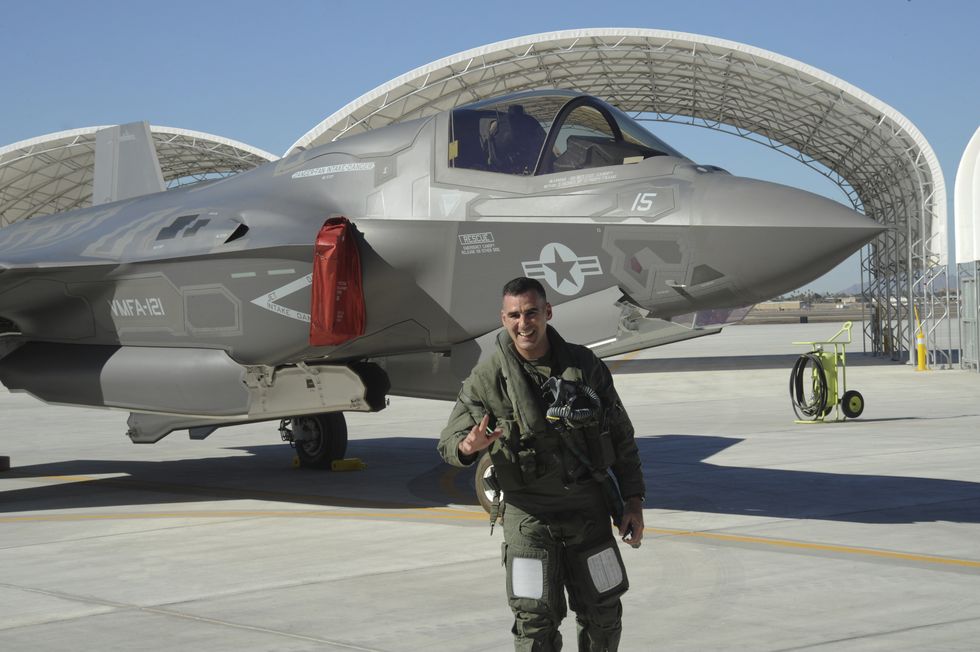- An F-35 Joint Strike Fighter recently crashed after its takeoff from the Royal Navy carrier HMS Queen Elizabeth.
- The plane allegedly crashed after its intake sucked in a rain cover.
- Despite the crash, the F-35 has proven to be an exceptionally safe combat aircraft, with less than one lost due to airplane defects per 100,000 flight hours.
A dramatic new video shows the moment a Royal Air Force pilot ejects from a stricken F-35B Joint Strike Fighter, as the aircraft plunges over the flight deck and into the sea. Thankfully, the pilot was unharmed, but the plane was lost. The incident is rumored to have involved human error.
The incident took place on November 17, as the new aircraft carrier HMS Queen Elizabeth transited the Mediterranean Sea. Queen Elizabeth and her escorts, known as Carrier Strike Group 21, were returning from her maiden voyage, which took her to the Middle East region, the South China Sea, and as far as the U.S. territory of Guam. Accompanying the strike group were the U.S. Navy destroyer USS The Sullivans and Marine Corps F-35B squadron, VMFA-211 ("Wake Island Avengers"), which operated from Queen Elizabeth's flight deck.
At the time of the incident, the only information available was that the F-35B, a Royal Air Force Jet belonging to 617 Squadron ("Dambusters"), had crashed and that the pilot had been safely recovered.
The Aviationist blog, using Naval Automatic Identification Systems ship-tracking data, determined that the accident took place somewhere between "Egypt, Cyprus, and Crete."
A new video (embedded in the tweet below) leaked to social media depicts the incident. In it, the F-35B rolls down Queen Elizabeth's flight deck toward the bow ski ramp. The plane appears to slow down as it climbs the ramp. As the plane reaches the top, the pilot's ejection seat fires, carrying the aviator to safety. Meanwhile, the plane plunges straight down into the Eastern Mediterranean.
Compare that video with one that depicts a normal takeoff from Queen Elizabeth, and it's clear that the F-35B's was anything but routine.
Martin Baker, the manufacturer of the F-35B's US16E ejection seat, celebrated the pilot's survival on social media, heralding it as the 7,662nd aircrew saved in the company's history.
The British government has not yet made any public announcement about the cause of the crash. The U.K. tabloid The Sun, citing an unnamed source, claimed that a red engine intake cover—accidentally left on the plane—was to blame. As the jet increased power, the engine sucked up the intake cover, crippling it and causing a propulsion failure. The covering was reportedly later seen floating in the sea.
Here's the intake covering on a U.S. Marine Corps F-35B:
The F-35B loss was a blow to Queen Elizabeth's air wing, which consisted of only 18 F-35Bs in the first place. A Nimitz-class aircraft carrier, by comparison, carries between 40 and 44 F/A-18E/F Super Hornet and F-35C strike fighters.
Despite the F-35's controversial reputation, the jet is actually one of the safest fighter jets to fly in history. The combined worldwide F-35 fleet passed the 400,000-flight-hour mark in July 2021. In that time, the F-35 has suffered only two or three incidents of crashes that were the result of mechanical failure (and not human error). This is much lower than other fighters in the U.S. military's arsenal, including the F-22 Raptor and AV-8B Harrier.

Kyle Mizokami is a writer on defense and security issues and has been at Popular Mechanics since 2015. If it involves explosions or projectiles, he's generally in favor of it. Kyle’s articles have appeared at The Daily Beast, U.S. Naval Institute News, The Diplomat, Foreign Policy, Combat Aircraft Monthly, VICE News, and others. He lives in San Francisco.














